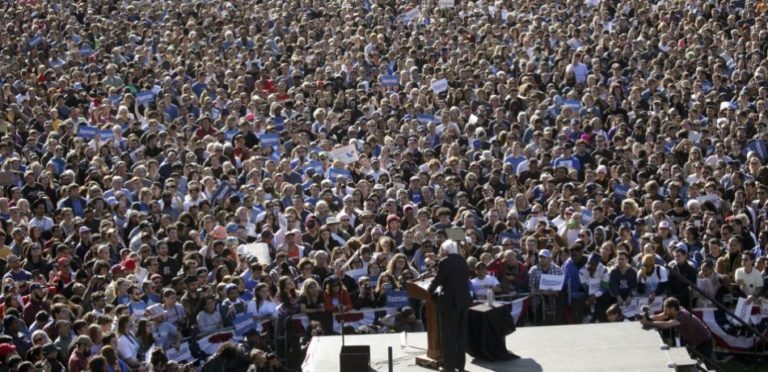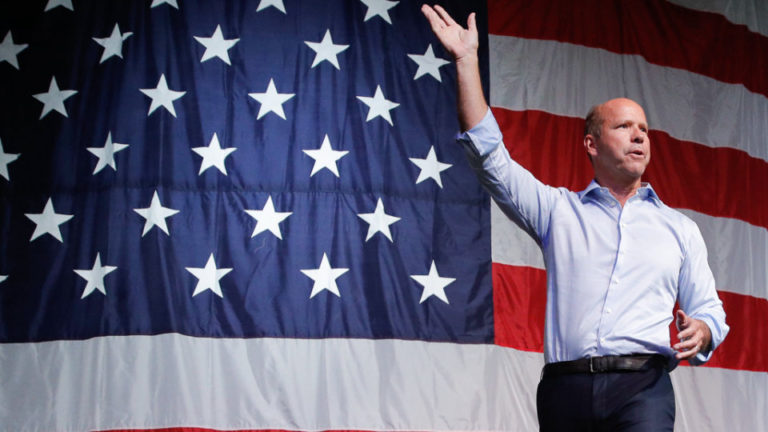Joe Robinson vacuums the carpet before the start of the caucus night celebration party for Democratic presidential candidate Sen. Bernie Sanders on February 03, 2020 in Des Moines, Iowa.Photo courtesy of Joe Raedle/Getty Images (via Business Insider).
To say that Monday evening in Iowa was a dumpster fire is an understatement. Firstly, caucuses are ineffective, antiquated, and must be replaced with primaries. And, secondly, our current electoral rules have some issues: a growing candidate pool renders the “first-past-the-post” system increasingly problematic and multiple rounds of voting are way too time-consuming. Can we just adopt ranked-choice voting already?
The Problems with Caucuses
Voting should be a handful of things: easy, accessible, private, and quick. In fact, the part of the voting process that should consume the most time is the researching of candidates and the issues. Caucuses have always been time-consuming. Caucus-goers usually have to trek to a community space, sometimes wait in line for more than an hour, and then likely endure multiple, lengthy rounds of “realignment” (go through multiple rounds of voting).
Local residents wait to enter an Iowa Democratic caucus at Hoover High School, Monday, Feb. 3, 2020, in Des Moines, Iowa. Photo courtesy of AP Photo and Charlie Neibergall (via Rochester First).
In the lead-up to this election’s Iowa caucuses, a slew of opinion pieces attacked the “first-in-the-nation” caucus to an unprecedented degree for being too white, old, and rural to hold such an influential role in the United States’ electoral process. Nonetheless, Monday evening unearthed a systematic flaw of the caucuses system.
When there are several candidates and more than two frontrunners amidst a party fractured into zealous factions, utter dysfunction ensues. If the support of many frontrunners—all being ideologically diverse people—is divvied up between various uncompromising factions, it becomes near-impossible for at least 50 percent to coalesce around one candidate. This doesn’t even mention the tiny ride-or-die herds following smaller candidates; some of their caucusgoers didn’t shift their support to another candidate until the very end—#YangGang, looking at you.
Statistically, caucuses have lower voter turnout compared to primaries. The likely culprit for this lower turnout is that caucuses benefit the privileged since a lot of people literally cannot afford to allocate at least two hours on a weeknight to participate in some undemocratic fever dream. This results in a disproportionate number of diehard activists and political ideologues participating, as opposed to regular voters. Primaries, rather, allow people to apply for an absentee ballot if the date and location of the election conflict with their schedule. Sure, long lines at polling stations are commonplace (depending on the time of day and location), but at least once you enter the station, you can vote in the privacy of your own voting booth.
Image courtesy of Common Cause.
The Pros of Ranked-Choice Voting
As mentioned above, major issues are the tedious rounds of realignment and the herculean task of achieving consensus among disparate voting blocs.
Ranked-choice voting works as follows. When you receive your ballot, you mark which candidates you prefer in descending order. If your first choice is last place, your vote will automatically transfer to your second choice and so on. This is until one candidate has at least 50 percent of the vote. It’s worth noting that there are variations of ranked-choice voting and that this example is merely one way. It’s as easy as one-two-three.
With votes transferring automatically, there’s no need to conduct several rounds of voting. This saves time and energy not just for voters but also for the vote-tallyers and volunteers.
Moreover, this system tends to produce victors supported by a broader swath of the electorate. Under our current system, a candidate in a three-way race (with even the smallest independent or third-party challenger) can win with less than 50 percent of the popular. Infamously in 1992: Bill Clinton only received 43 percent, while then-President George H.W. Bush and billionaire and independent candidate Ross Perot only received 37.4 and 18.9 percent, respectively. In all likelihood, if we had used ranked-choice in 1992, Clinton may have never sat at the Resolute desk.
Election 1992: George H.W. Bush (left), Ross Perot (center), and Bill Clinton (right) debating each other. Photo courtesy of AP Photos (via Politico).
All these issues represent symptoms of a defective political system, and there has been no substantial overhaul of it in a long time. Depending on your view, that was either the Democrats in 1972 allowing primary voters to select their presidential nominee, the Voting Rights Act of 1965, or the ratification of the 17th amendment in 1913. If there is a time for another overhaul, that time is now.
Doug Braff is a copy editor and the Public Relations Officer at “In the Zeitgeist” and a senior at NYU studying History and Creative Writing. Doug has interned at the U.S. Senate and the program ‘Fox News Sunday’ with Chris Wallace. Follow Doug on Twitter (@douglas_p_braff).



